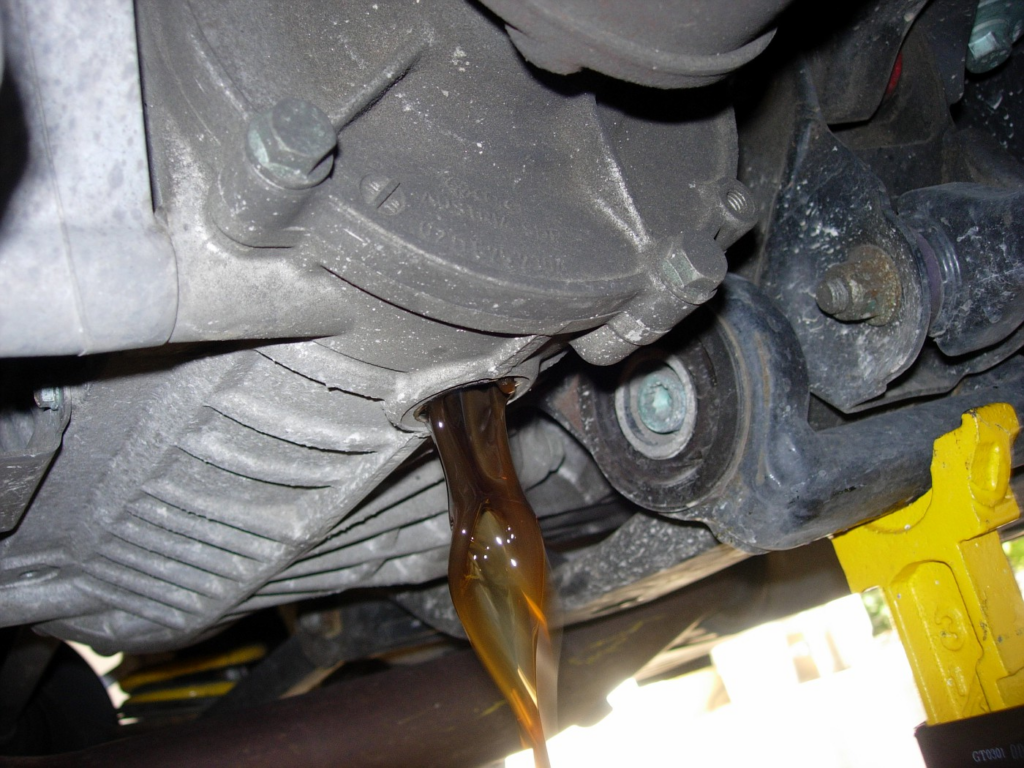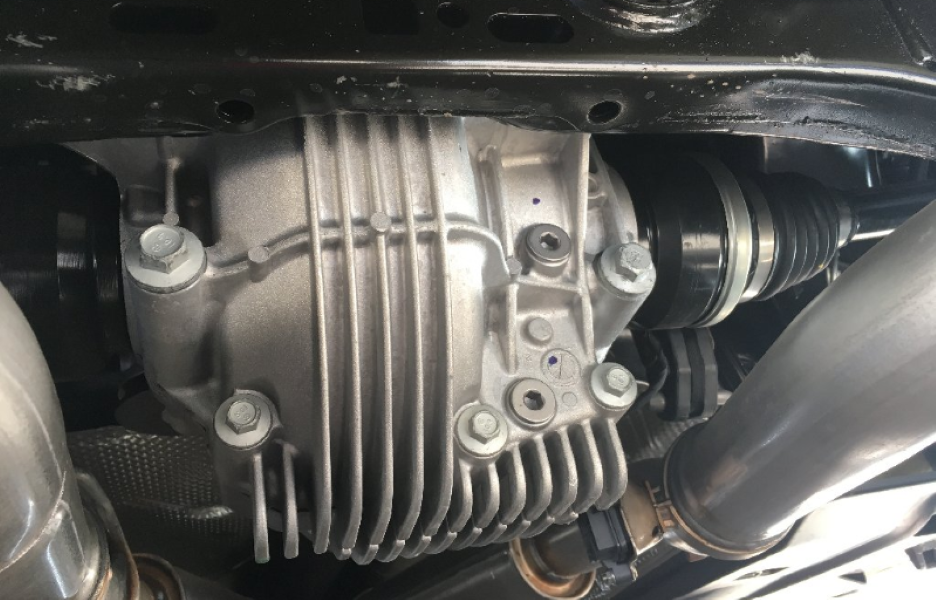Table of Contents
Rear Differential Fluid Change
What is a Rear Differential ?
The rear differential is a critical component of a vehicle’s drivetrain system. It allows the wheels to rotate at different speeds, which is essential for smooth and efficient turning. Without a functioning differential, driving would be difficult, especially when navigating corners or uneven surfaces.
Why Change Rear Differential Fluid ?
Importance of Fluid Change Regularly changing the rear differential fluid is essential to prevent excessive wear and tear on the gears. The fluid lubricates the differential’s internal components, reducing friction and heat, thus extending its lifespan and ensuring optimal performance.
Signs that Your Differential Fluid Needs Changing
- Unusual Noises: Grinding or whining noises from the rear of the vehicle.
- Vibration or Grinding: Feeling vibrations or grinding sensations, especially when turning.
- Leaking Fluid: Visible leaks or fluid spots under your vehicle.
How often should rear differential fluid be changed?
Manufacturer Recommendations Most manufacturers recommend changing the rear differential fluid every 30,000 to 60,000 miles. Always refer to your vehicle’s owner manual for specific guidelines.
Factors Influencing Change Frequency
- Driving Conditions: Regular off-roading, towing heavy loads, or driving in extreme conditions may require more frequent changes.
- Vehicle Age and Mileage: Older vehicles or those with high mileage may need more frequent maintenance.
Can I change the rear differential fluid myself, or should I go to a mechanic?
You can change the rear differential fluid yourself if you are comfortable with basic car maintenance and have the necessary tools and materials. It involves draining the old fluid, cleaning the differential, and refilling it with the correct type of fluid. However, if you are unsure or not confident in performing the task, it’s best to go to a mechanic to ensure it’s done correctly and safely.
Tools and Materials Needed to Change Rear Differential Fluid
List of Tools
- Wrenches and sockets
- Fluid pump
- Drain pan
- Jack and jack stands

Required Materials
- The correct type of differential fluid (consult your owner’s manual)
- Replacement gasket or sealant
- Cleaning supplies (rags, degreaser)
Step-by-Step Guide to Changing Rear Differential Fluid
Preparation
- Safety Precautions: Ensure the vehicle is on a level surface. Engage the parking brake and use jack stands to safely lift the vehicle.
- Locating the Differential: The rear differential is located between the rear wheels. Consult your vehicle’s manual if necessary.
Draining the Old Fluid
- Remove the fill plug first to ensure there is no pressure build-up.
- Place the drain pan under the drain plug and remove it to let the old fluid drain completely.

Cleaning the Differential
- Inspect the interior for debris or metal shavings.
- Clean the differential housing with a degreaser and rag.
Refilling with New Fluid
- Check your vehicle’s manual for the correct type and amount of differential fluid.
- Use a fluid pump to refill the differential until the fluid starts to seep out of the fill hole.

Sealing and Finishing Up
- Replace the gasket or apply sealant to the drain plug.
- Reinstall the drain and fill plugs securely.
- Lower the vehicle and clean any spilled fluid.
What happens if you don’t change rear differential fluid?
Neglecting to change your rear differential fluid can lead to a host of issues, significantly impacting your vehicle’s performance and longevity. The rear differential fluid plays a crucial role in lubricating the gears and bearings within the differential, reducing friction and heat. Over time, the fluid degrades and becomes contaminated with metal shavings and debris, leading to increased wear and tear on the internal components. This can result in poor performance, characterized by reduced traction, poor handling, and unusual noises such as grinding, whining, or clunking. Additionally, degraded fluid loses its ability to dissipate heat effectively, causing the differential to overheat, which can lead to metal components expanding and potentially seizing.

Ignoring differential fluid changes increases the risk of severe damage and potential failure of the differential. In extreme cases, this can necessitate a complete differential rebuild or replacement, which is a costly repair. Moreover, a malfunctioning differential can compromise vehicle safety, leading to potential safety hazards such as poor handling and reduced traction, which could result in accidents. Regularly changing the rear differential fluid according to the manufacturer’s recommended intervals is a simple and cost-effective maintenance task that can prevent these issues, ensuring smooth and efficient power transfer to the wheels, prolonging the differential’s lifespan, and maintaining optimal vehicle performance and safety.
How can I tell if my rear differential fluid is low?
You can tell if your rear differential fluid is low by noticing unusual noises like grinding or whining from the rear of your vehicle, feeling vibrations or grinding sensations, especially when turning, and observing any fluid leaks or spots under your car. Additionally, checking the fluid level manually by removing the fill plug on the differential and inspecting the fluid level and condition can confirm if it’s low.
How to replace rear differential ?
If you have a Mercedes GL and you would like to replace the rear differential, follow the next steps;

- Block the vehicle on the lift
- Remove the drive shaft at the differential flange
- Remove the left rear axle shaft
- Remove the bleed hose (1) from the differential (2)
- Support and secure the differential (2) with the component support and the mounting plate
- Unscrew the bolts (2s)
- Chock the right rear axle shaft to prevent it from falling
- Dislodge the right rear axle shaft from the differential (2) by levering
- Lower the differential (2)






Leave a Reply